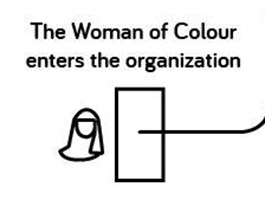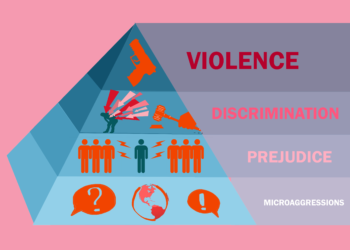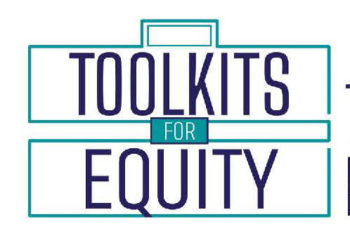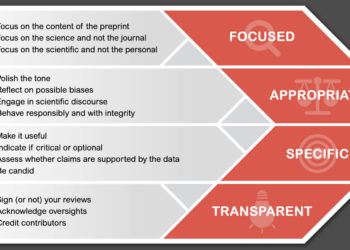Editor’s Note: Today’s post is by Richard de Grijs. Richard is Associate Dean (Global Engagement) and Professor of Astrophysics at Macquarie University in Sydney. He served as scientific editor of The Astrophysical Journal from 2006-2012 and Deputy Editor of The Astrophysical Journal Letters from 2012-2018. Richard is currently Associate Editor for the Journal of Astronomical History and Heritage.
When NASA, the National Aeronautics and Space Administration, announced in August 2020 that it would retire the use of potentially offensive astronomical nicknames, sections of the Internet immediately railed against the organization’s perceived ‘wokeness’. Numerous social media commentators complained about political correctness gone awry.
As a senior academic, AuthorAID Steward (senior advisor), and freelance provider of academic skills training, I agree that a careful balance must be struck between freedom of expression and the right not to be offended in the workplace. However, I also question the commentators’ implied entitlement that they should be able to use potentially offensive expressions indiscriminately. It seems rather elitist to assume that any of us can simply decide which terms may or may not be offensive to sections of the population we are not part of. NASA’s announcement, combined with the common use of potentially inappropriate terms in my own discipline of astronomy and astrophysics, recently led me to reconsider the inclusivity of my own communications — both in my peer-reviewed scholarly publications and in my public speaking engagements.
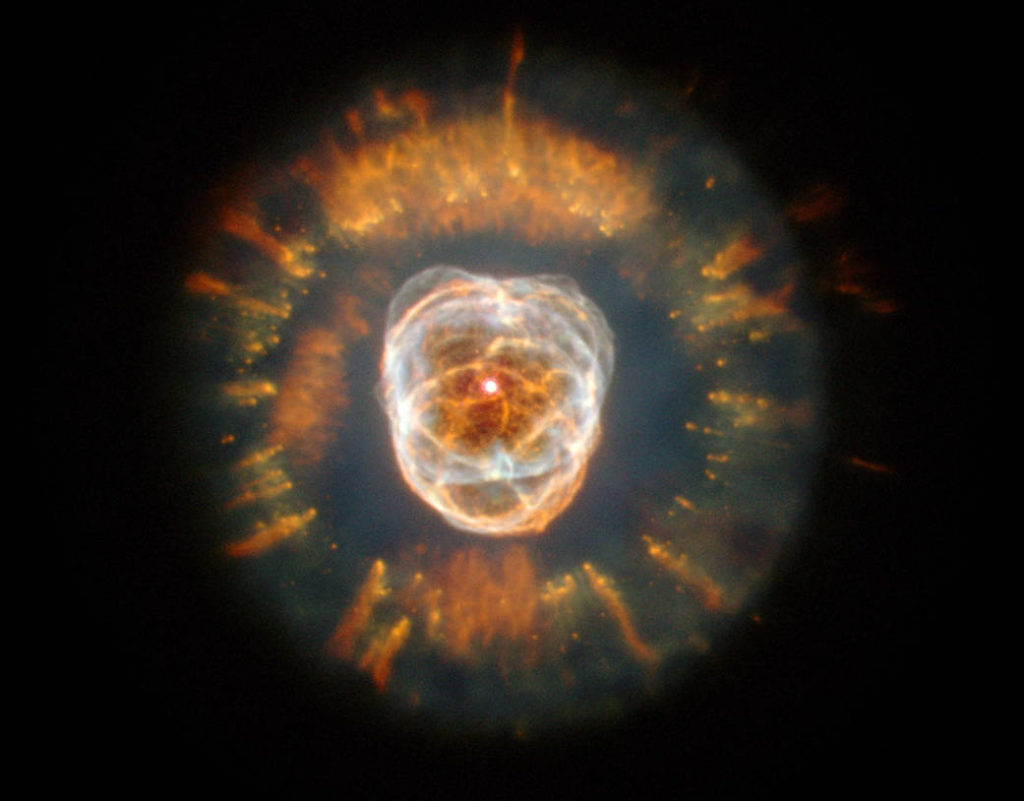
The use of inclusive language in scholarly communication is increasingly seen as important, and a number of publishers and societies have issued their own guidelines, including Nature Astronomy, the American Astronomical Society, the American Psychological Association, and a growing number of higher education institutions around the world. Academic writing often aids in molding societal behavior and perceptions. Unconscious biases can result in unintentional stereotyping or exclusion simply through ill-considered word choices. As scholarly communicators, we are often seen as role models—to our students, peers, and even to society as a whole. Inclusive language in scholarly communication serves to acknowledge and celebrate diversity, extend respect to different sections of society, and ultimately promote equitable opportunities.
My aim in contributing this post is to initiate an informed and respectful discussion about expressions that are often thoughtlessly used by scholars and scientists in their communications, but which could be perceived as offensive, inappropriate, or discriminatory. I have attempted to collect as many such terms as I could find in my own discipline area, and I am keen to hear of similarly problematic expressions in other academic fields. This is, therefore, an invitation to all Scholarly Kitchen readers to actively contribute to an engaging discussion on this topic.
Problematic nicknames
In the NASA announcement, two astronomical objects were singled out: the Eskimo or Clownface Nebula and the Siamese Twins, a spectacular collision of two galaxies, each similar to our own Milky Way. Both objects were discovered by William Herschel (1738–1822), the German–British astronomer commonly credited with the discovery of infrared or ‘heat’ radiation.
In historical, somewhat blurry images, the nebula — officially known by its catalog number NGC 2392 — resembles a face surrounded by a fur parka. It is a so-called ‘planetary nebula’, a star at the end of its life that has ejected most of its atmosphere. And although the object’s ‘Eskimo’ monicker had been introduced much earlier, a stunning image taken with the Hubble Space Telescope following its December 1999 repair mission propelled the nebula into the spotlight.
While the origin of the term ‘Eskimo’ to describe Inuit people remains a matter of contention, its use is considered disrespectful. The Inuit Circumpolar Conference (ICC) Charter of 1980 defines the Inuit as “Indigenous members of the Inuit homeland recognized by Inuit [my emphasis] as being members of their people [which] shall include the Inupiat, Yupik (Alaska), Inuit, Inuvialuit (Canada), Kalaallit (Greenland), and Yupik (Russia)”. The ICC resolutely rejects the externally imposed term (exonym) ‘Eskimo’, a stereotype assigned to Arctic inhabitants by non-Inuit people.
The merging galaxies known as NGC 4567 and NGC 4568 — both located in a dense group of galaxies known as the ‘Virgo Cluster’, at a distance of some 65 million light-years from Earth — have long been known as the Siamese Twins. The original ‘Siamese twins’ were two men, Chang and Eng, born in 1811, who were joined at the waist yet led active lives until their deaths in 1874. However, referencing an entire race — Siamese (Thai) people — through a birth defect is clearly inappropriate; ‘conjoined twins’ is now the preferred term.
Care is also needed when naming new tools. In the same context of referring to sections of the population in offensive ways, one potentially problematic acronym for a software environment developed for the analysis of astronomical radio observations is GIPSY, the Groningen Image Processing System. Since the software tool’s inception in the late 1970s, the plight of the Romani people has become well-known. Their popular designation as ‘gypsies’ is a second example of an exonym that is widely seen as pejorative. For example, the Merriam–Webster equates ‘gypped’ with being swindled, defrauded, or cheated, whereas the Oxford English Dictionary traces the term back to its first use in the 1899 Century Dictionary: “… probably an abbreviation of gypsy, gipsy, as applied to a sly, unscrupulous fellow.” Perhaps the time has come to reconsider this acronym.
At the time of NASA’s 2020 announcement, Thomas Zurbuchen of the agency’s Science Mission Directorate anticipated that additional objects might appear in their crosshairs. Perhaps the dense group of galaxies formally known as ACT-CL J0102–4915, dubbed El Gordo – the Fat One – in 2012, may also be on the chopping block. In fact, this is not the first time astronomers inappropriately considered a pun about obesity humorous. Incredibly, around the same time, a new software tool was introduced, with the rather contrived acronym FATBOY – The Florida Analysis Tool Born of Yearning for high-quality scientific data. Really?
And what about references to the Naked quasar, HE0450–2958? A quasar or quasi-stellar object, is the manifestation of a very dense and massive ‘black hole’ (more about black holes below) at the center of a very distant galaxy. In this case it’s classified as ‘naked’ because the black hole responsible for the ejection of high-energy beams of radiation lacks a galaxy to reside in — but there are plenty of alternative expressions that would be less potentially offensive…
Astronomical object naming is the purview of the International Astronomical Union, which has established careful and thoughtful processes to reach global consensus. Even so, it is not unheard of that objects are renamed following a public backlash. For example, the object 486958 Arrokoth — the most distant object in the outer regions of our own solar system that has thus far been visited by a spacecraft — was originally called Ultima Thule. That designation led to an outcry, however, given unintended associations with the homeland of the mythical Indo–European ‘Aryan’ race idolized by the Nazis.
A minefield of potentially offensive terms
Nevertheless, other terms associated with that dark period in European history continue to appear routinely in the astronomical literature, including the acronym SS, which stands for ‘symbiotic star’ (a binary star system of which one is in the process of losing most of its atmosphere to the other) — not a reference to Hitler’s much-hated security, surveillance, and terror organization, the Schutzstaffel.
More often than not, intentionally ‘funny’ expressions found in scientific articles turn out to be particularly and disproportionately demeaning to our female and non-binary colleagues. This ranges from the thoughtless use of the acronym for ‘holographic optical elements’ to references to the allegedly promiscuous nature of binary star systems and ‘black widow’ pulsars. Pulsars, short for ‘pulsating stars’, are very dense and rapidly rotating stars at the end of their lives that emit beams of radiation from their poles. Black widow pulsars orbit small (‘dwarf’) stars, and just as a black widow spider eats her mate, these pulsars could gradually erode the gaseous outer atmospheres from their dwarf companion stars until the latter cease to exist. The expression ‘black widow’ — “characterized by or involving indiscriminate mingling or association, especially having sexual relations with a number of partners on a casual basis” — is disparaging to women; there is no equivalently disparaging term for men.
In my own area of research into the origin and fate of star clusters — dense groups of hundreds of thousands to millions of stars that presumably formed in the most violent environments in the universe — references to infant mortality abound. The concept, which refers to the disappearance at young ages of a large fraction of star clusters that formed approximately at the same time in a given galaxy, was introduced in 2003. It has since become rather popular; at the time of this writing, NASA’s Astrophysics Data System returned 69 abstracts containing the designation (admittedly including some of my own).
You might dismiss this latter warning as overly sensitive. However, earlier in my career I experienced up close the impact of my thoughtless use of the infant mortality concept. A female colleague became visibly distressed when I used the expression in a scientific presentation. I later heard that she had suffered a miscarriage. It was a good reminder to be really mindful of one’s language; a mistake is easily made but difficult to correct.
As such, I was rather disturbed to learn of an attempt by a junior male colleague to introduce the notion of a cruel cradle effect in this same subdiscipline. There must surely be an acceptable, less offensive description of that process, which describes the effects of tides on star clusters by external gravitational forces…
On much larger physical scales, violence in enormous clusters of galaxies is routinely referred to in terms of strangulation (gas loss from a galaxy cluster, eventually halting new star formation in its member galaxies) and harassment (repeated, high-speed encounters and collisions between galaxies). Yet again, both terms are disproportionately insensitive to female and non-binary colleagues. Their use is now deemed largely inappropriate in the context of our field, given their pejorative connotations.
‘Strangulation’ is usually associated with domestic violence; it is often a telltale sign of escalating tensions in an intimate relationship. Meanwhile, the Australian Human Rights Commission states that “harassment can be against the law when a person is treated less favorably on the basis of certain personal characteristics, such as race, sex, pregnancy, marital status, breastfeeding, age, disability, sexual orientation, gender identity, or intersex status.”
Some database abbreviations also have the potential to cause offense. For example, an entire generation of astronomers has built their careers on the rich data set of variable stars, that is, stars that show brightness variations over time, provided by the Optical Gravitational Lensing Experiment -– OGLE. Yet, any English dictionary will reveal that ‘ogling’ has the singularly inappropriate meaning of objectifying female members of society.
However, scientists pursuing the nature of the so-called ‘dark matter’ — a type of matter that we cannot see directly, but which causes an effect on nearby, visible matter through gravity alone — have defined some of the most inappropriate acronyms in the field, including MACHOs (MAssive Compact Halo Objects), WIMPs, super-WIMPs (Weakly and super-Weakly Interacting Massive Particles, respectively), and GIMPs—Gravitationally Interacting Massive Particles. I am aware of a number of colleagues that have indeed taken offense at these terms.
Just be mindful…
My key message is that we should be mindful of our language at all times. Consider whether any expression used might offend the reader and check if the adopted terminology passes the ‘pub test’.
It is, of course, not always easy to strike the right balance, and offense might be taken even if an expression easily passes stringent suitability criteria. Take the African–American county official from Texas, who objected to the term black hole, used figuratively, or the numerous social media discussions about the use of the term blackbody, which may perhaps be acceptable as a single word, particularly in the context of radiation physics, but certainly not as two.
Public speaking and scientific writing can present daunting minefields for the unprepared but, by tackling this issue at the individual discipline and broader community levels, we can create safe spaces and work towards a more inclusive environment for everyone.
Discussion
11 Thoughts on "Guest Post — Offensive or Inclusive Language in Scientific Communication?"
I do agree with the majority of points made here, but wonder at the inclusion of naked as a potentially offensive term. Perhaps I’ve misunderstood the reference.
I feel that offence – once all authentic, reasonable and explicit efforts have been made as per the above – is very much a matter for the parties involved to communicate and negotiate between themselves, since one cannot possibly accommodate all potential offence… but one can make an unequivocal, consistent and concerted effort not to offend; and to be open to feedback, and change based on that feedback.
My thoughts were like yours, Kev — “naked” is offensive now?
As a medical terminology researcher, my first mental association re “strangulation” did not concern domestic violence, but hernias. The medical meaning of “strangulate” [1771: “To constrict or compress (an organ, duct, etc.) so as to prevent circulation or the passage of fluid; to remove (a growth) by constricting it with a ligature”] is decades older than the nonmedical meaning of “strangulate” [1846: “To prevent respiration in (a person) by constriction of the trachea”]. [“strangulate, v.”. OED Online. December 2021. Oxford University Press. https://www-oed-com.ezproxy.library.wisc.edu/view/Entry/191263?rskey=T2zwzV&result=3&isAdvanced=false (accessed March 01, 2022).]
Open dialog about any term somebody perceives as offensive can be awkward, but is necessary for any dialog to move forward– totally agree with you that “one can make an unequivocal, consistent and concerted effort not to offend; and to be open to feedback, and change based on that feedback.”
While such expressions may not be intended as offensive on a case-by-case basis, the examples I cited in the post were all based on practitioners in my field having expressed discomfort or actual offence after having exposed to them (the original post contained links to all statements made; those links don’t appear in the published version). In the field of astronomy and astrophysics, we are attuned to engaging broader audiences, perhaps more so than in many other fields given the public appeal of many of our stunning images. Public engagement often attempts to humanise complex concepts, which in turn could lead to the introduction of human parallels that may be experienced as offensive by some. My post was written from that broader perspective.
Excellent points. If we can temporarily wear someone else’s shoes, we might all walk more thoughtful paths.
While it is of course appropriate to avoid obviously offensive language in scholarly writing, it is ridiculous to parse every phrase for its potential to offend someone who is suffering from an emotional distress the author is unaware of; at some point we have to presume good faith on the part of our readers. We should also acknowledge that the claim “I’m offended” has now been weaponized by those who seek to squelch discussion of certain topics entirely, and it for this reason that “the woke” (which is itself an offensive term, given its suggestion that people so described have received some sort of enlightenment while those who disagree with them on a given issue have not) are receiving the pushback they are.
The point I made in the second paragraph of my post is that we should be mindful of how our language could come across. What you perceive as ridiculous, could be painful to other readers. Thanks for providing an illuminating example of precisely what I had in mind.
Perhaps it would be helpful to reframe some of this terminology as not simply “offensive” (which opens the door to rebuttals like “people are too easily offended these days!”) but hurtful, demeaning, or harmful.
It’s notable that many of Richard’s examples aren’t just outdated and derogatory, they are outdated and derogatory names of ethnic groups. It’s 2022; we should not still be naming things after ethnic and racial slurs.
The ICC isn’t a collection of militantly offended people clutching its collective pearls about the Eskimo Nebula; it’s a group representing people who have been systematically marginalized by colonizing cultures, have fought to reclaim their human dignity, and would like the rest of us to stop using a name with derogatory associations. (In this specific case, note that the professional football team in Edmonton, Alberta, recently changed its name to Elks; if a football team can do it, surely the rest of us can, too.)
Readers familiar with the bibliometrics/scientometrics space within the broad field commonly known as “research on research” may hear parallels in the arguments levelled against proponents of terms for certain citation-based phenomena. Back in 2018, an excellent critique of phrases such as ‘sleeping beauties’ and ‘smart girls’ was levelled at those who continue to use them unthinkingly (https://asistdl.onlinelibrary.wiley.com/doi/full/10.1002/asi.24014). The editors of that journal went on to amend the instructions for authors to give explicit guidance on avoiding such usage.
I volunteer with a scicomm group and totally agree with the point in this article. We’ve been careful about how we think about and discuss things. For example, we do not refer to our community members as ‘lay people’ but as members of our community where our goal is to bridge gaps between science and our communities. When we ask scientists to create their presentation, we ask that they put it in plain language, not lay language. The idea is to make science and scientists more relatable. The fact is that certain terms work within your field of expertise but they are absolutely unnecessary in most of life. I do think scientist need to do a bit better of a job in how they discuss and approach scientific topics within our society.
Offensive remarks are quite common in peer reviews. Since peer reviews remain opaque, it is not realized, but quite a few times I have seen aggressive and insulting words in peer reviews received. Perhaps it is more common for manuscripts communicated to leading journals from the third world. Let all the peer reviews be made public and you will understand what language the scientific community normally uses. I am not the only one saying this. It is well documented. See doi:10.7717/peerj.8247
